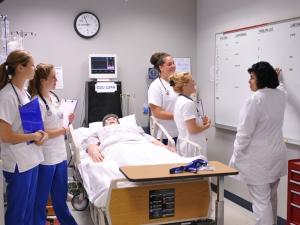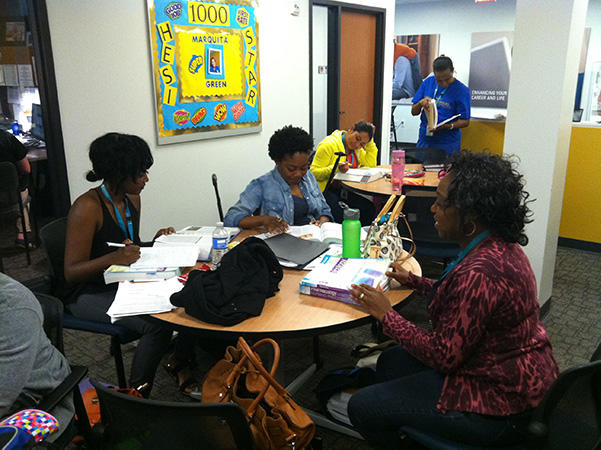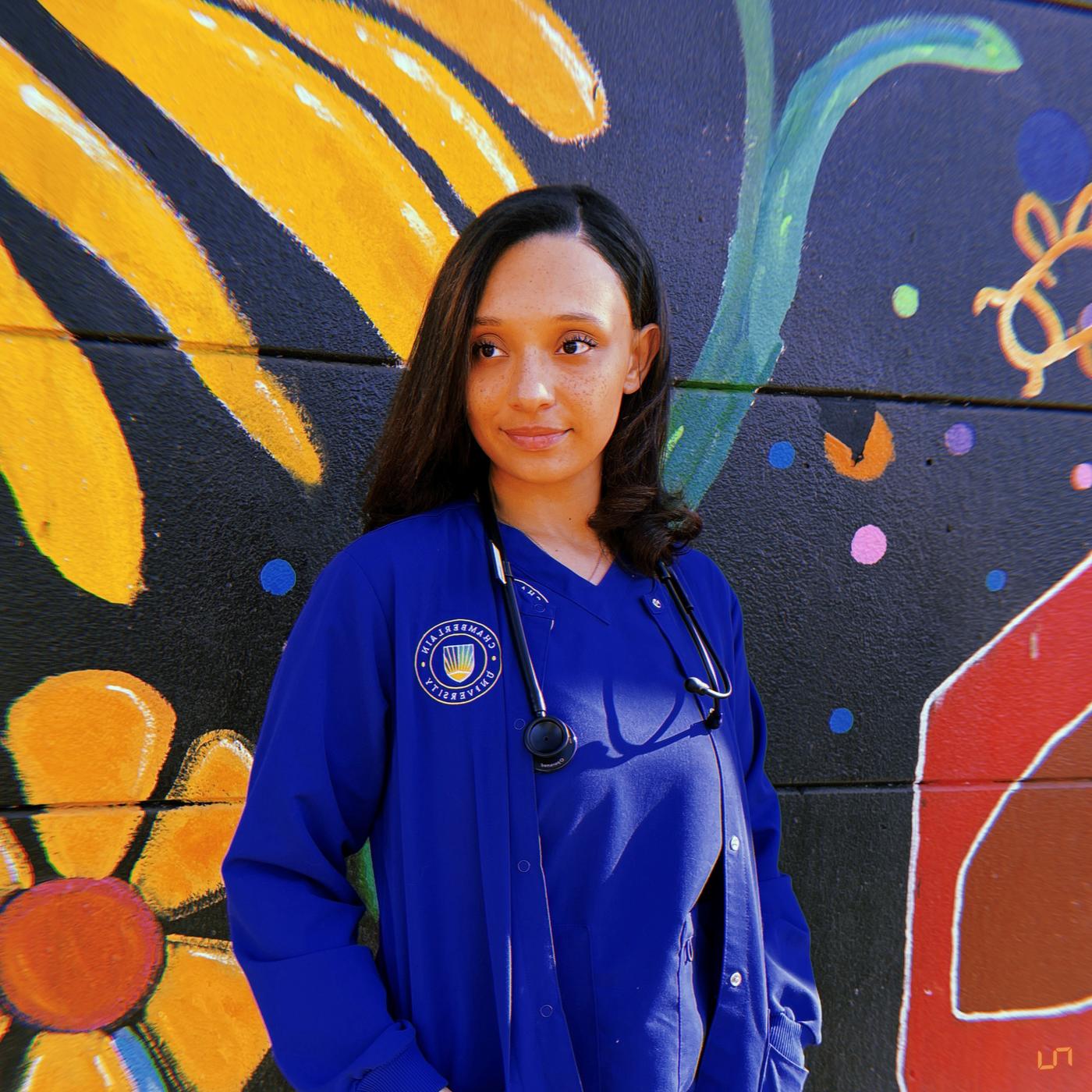Featured
Tags
Share
- Home / Blog / Campus News / Behind the Scenes at Chamberlain’s SIMCARE CENTER
Behind the Scenes at Chamberlain’s SIMCARE CENTER

It’s 8:40 am at Chamberlain Community Hospital. In room 103B, Grover Galvani, an 87-year-old nursing home patient, is concerned about getting to physical therapy on time.
His nurse Christina has other worries. She’s concerned by the gurgling sound in his lungs and phones his doctor.
While it may sound like a common scenario, Grover is not your average patient and Chamberlain Community is not your average hospital. Grover is a high-tech patient simulator being cared for by a student nurse in Chamberlain College of Nursing’s SIMCARE CENTER™, a safe training ground for nurses-to-be.
He may not be human, but Grover can do it all—from blinking to bleeding or sweating to drooling. His pulse can be felt in the same places as a typical patient. Student nurses can intubate him, perform CPR, or shock him with a cardiac defibrillator, among other scenarios.
“Anything physiological you or I can do, the simulator can do,” said Tamara Williams, SIMCARE CENTER manager at the Chicago campus. “And he will react in the same way.”
Behind the scenes in a control room, Kesha Love, a clinical learning lab specialist at the Chicago campus, controls and voices Grover, bringing him the rest of the way to life.
“Many of our students tell us this is the first place they feel like a real nurse,” Williams said.[/caption]
“You didn’t warn me! That surprised me!” Grover yells out after a student performs a finger glucose stick on Grover, who suffers from Type 2 Diabetes
With a class new to simulation, such as this one, Love lets the patient provide some clues that will help students improve their care, as well as bedside manner.
“Did you clean my skin? I didn’t feel anything cold,” Grover adds.
Instructors assess each interaction student nurses have with the patient. During this session, they’re watching to see if the student nurse introduces herself, IDs the patient, practices good hand hygiene, properly performs a head-to-toe assessment and checks Grover’s incision under his gown, among many other items.
Everything about a nursing simulation is geared to mirror real-life healthcare scenarios as closely as possible. Students arrive in uniform, and in addition to providing care, they chart and administer medications, as well as interact on the phone— calling the operator to have the doctor paged, or the lab to get test results.
During ICU simulations, Williams plays a recording of an actual intensive care unit. The beeping of monitors and other sounds can be a big distraction to nurses unaccustomed to the noise, she said.
The medical scenarios selected for each course are also strategically planned to align with common health problems in that area of nursing. For a pediatrics simulation, student nurses might respond to a patient with asthma or who has just had an appendectomy. Students in critical care nursing might be challenged to respond to the aftermath of a car accident. In Adult Health, patient simulators might suffer a heart attack or have diabetes. And of course there’s Noelle—a simulator who actually delivers a baby.
“Many of our students tell us this is the first place they feel like a real nurse,” Williams said. “In clinicals, they feel like students. In the SIMCARE CENTER, they have to rely on their own knowledge and assessments.”
Four students provide care to the patient, while another four observe the care provided from the briefing room. When it’s time to switch, students brief the incoming group, providing a nurse-to-nurse report on the status of the patient. Following the session, the group meets to debrief what went well and what could be improved.
During this post-conference, Love reminds students not to assume and to recognize the difference between subjective and objective statements from a patient. If Grover says he drank a cup of coffee that morning — how much did he actually drink? Was it two ounces or eight?
“You need to have measurable data,” Love said. “In order to get the objective information, you’re going to need to pull that from the patient.”
The session ends with each student sharing one takeaway point. One student commits to making sure she has all the needed information before calling the doctor next time. Another student remarks she will read up on her patients’ maladies before the next session to be better prepared.
While Grover won’t make it to physical therapy today – doctor’s orders— he can rest easy knowing he is getting the very best kind of care— Chamberlain Care.
Attend a Chamberlain Open House today to see the SIMCARE CENTER in action!
By Molly Mattison
More from Campus News
Request More Information
To receive the Chamberlain University Program Guide, including associated career paths, please select a program of study.






